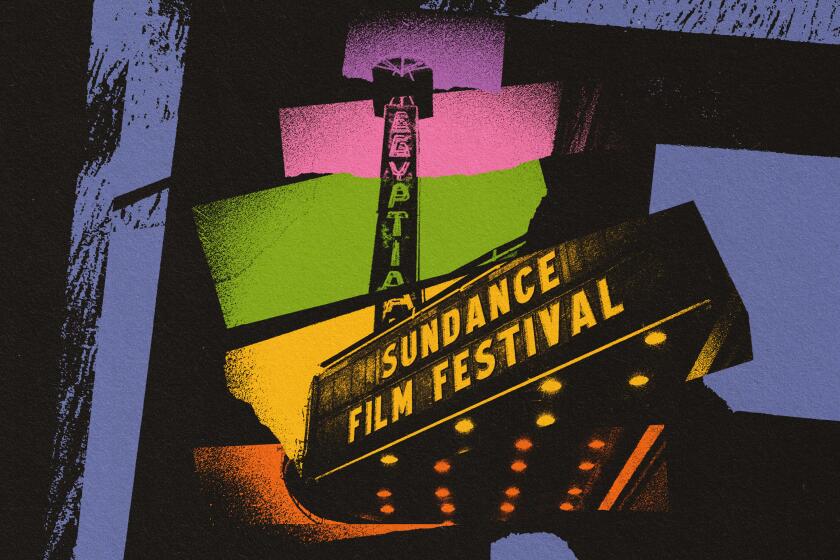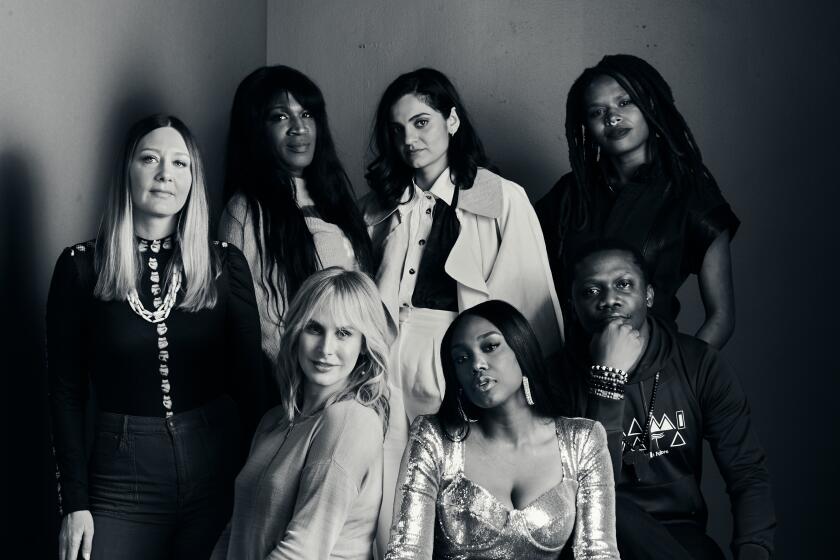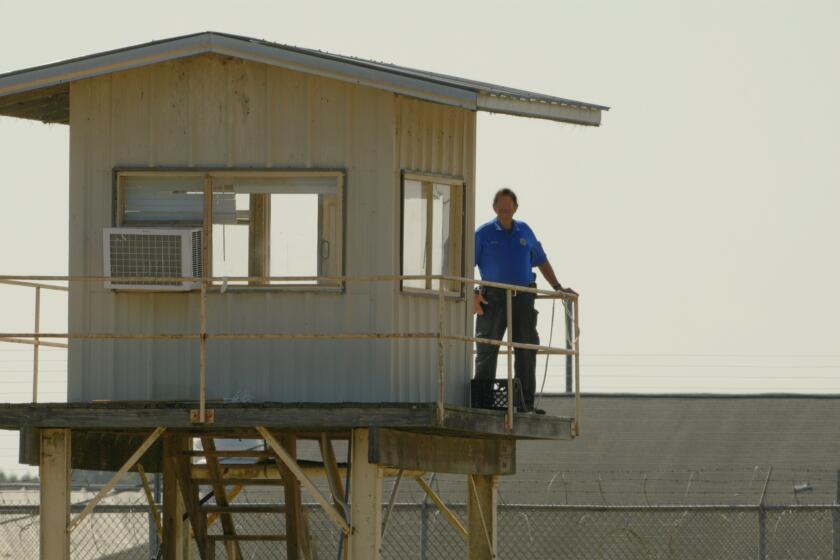- Share via
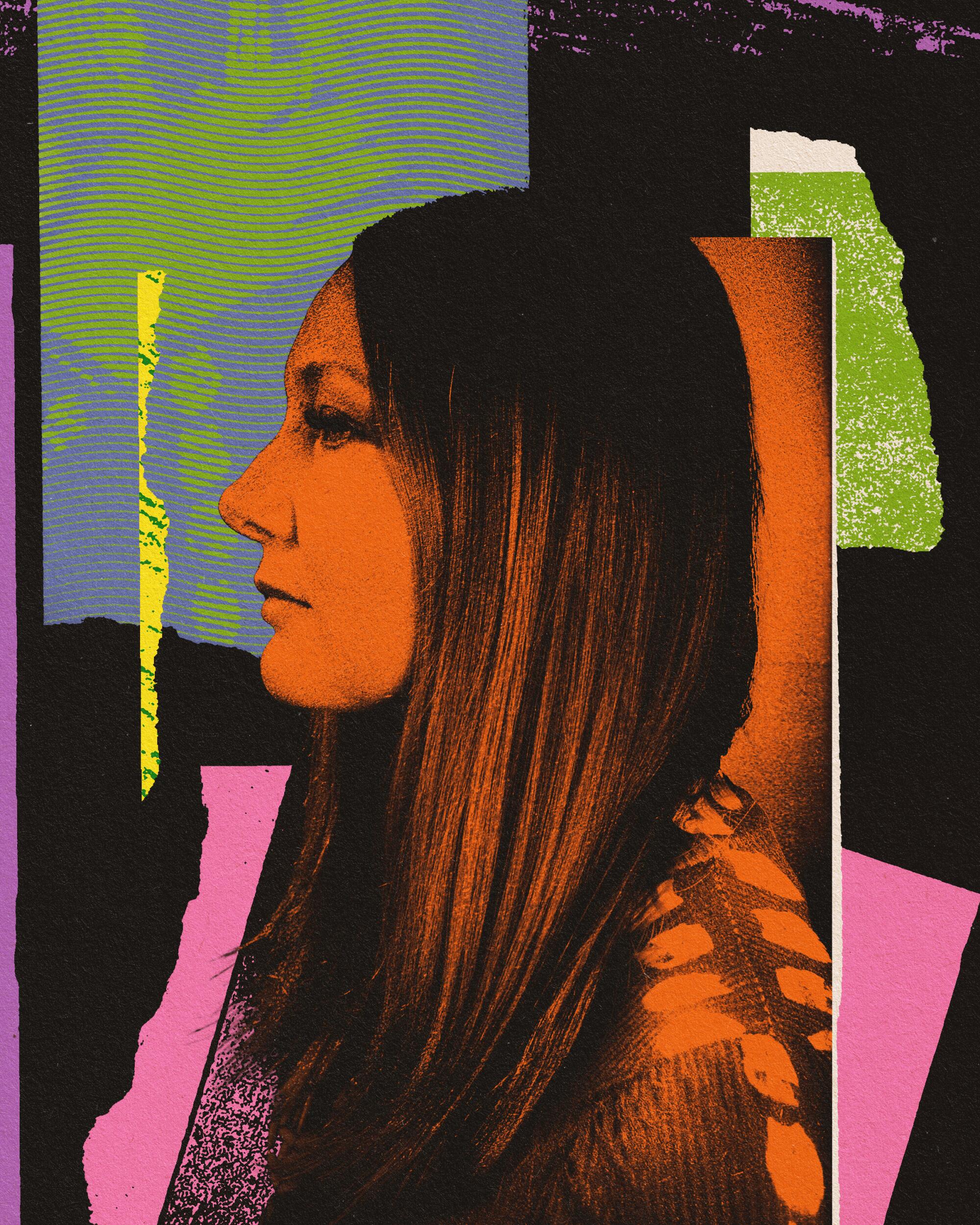
Erica Tremblay attributes much of her film and television career to the Sundance bounce. It was being accepted into the Native Filmmakers lab that provided her the resources to create her short film “Little Chief,” which debuted at the 2020 Sundance Film Festival in Park City, Utah. That led to further opportunities, such as her first TV gig, as well as a path toward her first narrative feature, “Fancy Dance,” which premiered as part of the U.S. dramatic competition at Sundance this year.
The film, starring Lily Gladstone as a hustler named Jax, is a tender and grounded look at the life of a Native American woman that celebrates community and the complexity of family and neither sensationalizes nor minimizes the realities of physical and systemic violence that Indigenous women face.
“Fancy Dance” was well received at Sundance, and since then, Tremblay — who is also a writer and director on FX’s “Reservation Dogs” — has juggled her work in television with taking her film to other festivals. (She even made the trip to the Cannes Film Festival to join Gladstone at the “Killers of the Flower Moon” premiere.) And while the film has yet to find a distributor, Tremblay remains hopeful that the “right partner” will come along.
Longtime festival programmer John Nein reveals eight tips for applying to Sundance. Plus, seven filmmakers reveal their festival dos and don’ts.
Catch me up on what has and hasn’t happened with “Fancy Dance” since Sundance.
Festivals and all the juries at the festivals and the critics have really embraced the film. Everywhere we go, we’ve had sellout screenings. We’ve had such incredible engagement from the community and such great reviews and we’ve won a bunch of prizes. So I couldn’t be more excited about the conversations with audiences and the reception of the film. Those are all the good things that have happened.
What hasn’t happened is finding the right partner for distribution. You get this checklist, I guess, from the industry that tells you: Write a good script, raise money, make the movie, get into a film festival like Sundance, premiere on Friday night at Eccles, get positive critic reviews. And you’re like, “OK, we’re set. I did everything that was given to me on this checklist.”
I think it’s a mixture of what the independent film market has been like the last two years, and we’re struggling to take a project like this, with Indigenous themes, to find a partner that understands not only the value in our film but also the value in the audiences that want to watch films like this. We’re still fighting for these authentic Indigenous stories to find platforms so they can reach audiences that we know want to see these films.
I’m still hopeful. We’re having a lot of conversations with a lot of folks, and we’re kind of waiting for that right partner to come in and click. It took us over two years to find the right producers to come on board for this project and get it funded, so we’re kind of having the same patience when it comes to distributing the film.
What was the emotional high point of your Sundance experience?
I was so nervous when the movie started. You know, you make these films kind of in a silo. You have all of your trusted partners with you, but when you walk out onto that stage, you’re getting ready to show it to 1,500 people when maybe 15 had seen it. So I was so, so, so nervous. At the end of the film, just having members of the community come up and talk about their response to the film and how seeing themselves authentically represented onscreen meant so much to them — the conversations that I’ve been able to have with people who’ve now seen the film from my community and other Indigenous communities have been so... fulfilling is the wrong word. It’s a really painful process, from the writing to the production to the editing, especially in independent film. It’s such a grind, and you wonder what you’re doing it for sometimes. And then when you’re able to express your art, and someone else takes it and interprets it and kind of reacts to it, is a truly incredible reciprocity. I definitely was inspired to do more. I want to do it again. Because I really enjoyed having those conversations with audiences. The emotional high is definitely just in the response of audiences to the film.
This wasn’t your first Sundance, but what did you learn from your Sundance experience this time?
I learned to drink a lot of water. And to try to stay in the moment and take it all in. It was such a whirlwind of an experience that I was so glad to have with Lily Gladstone and Miciana [Alise], my co-writer, and my producers. Just being able to stop every once in a while and be like, “You’ve accomplished this and you’re here. You’re doing something that you’ve always dreamed about doing and you’re in your best element.” I think it’s easy to just let that go by so quickly. It’s also easy to get stressed out about the press or stressed out about just walking on those cold sidewalks and looking around at this incredible institution. I think that the camaraderie of all the other filmmakers and all the other creators there is something that I was trying to hold on to. Just being a part of that group of people that you look up to so much and stopping and taking it in and feeling pride, which is sometimes really hard to do. Sundance helps you believe in yourself, which is cheesy to say, but it’s what my experience has been.
To commemorate next year’s 40th edition of the Sundance Film Festival, we’re spending 12 months looking at the lives of 7 members of this year’s class.
What was the most fun thing you did in Park City outside of your film’s launch?
This is maybe tied too much to the film, but we had a lot of Native families there — there were a lot of Native moms and Native aunties. And when we were doing press, they have all those places that you go to and there’s usually water bottles and hats and sometimes clothing and all this stuff. So we had all these Native moms and aunties who were just [grabbing] stickers and water bottles and hats, and by the end of the day, we’re in our little car that they drive you around in, and it’s just full of all this swag that’s now probably with uncles and cousins in reservations that all of our families are from. I think one of the funnest things for me was being there with Native families and Indigenizing all these weird spaces we were in. It was just delightful to have family members there, because I think in this industry, a lot of times, you don’t have that.
If you had to quantify the Sundance “bounce” with one thing that’s happened to you since then, professionally or personally, what would that be?
I’ve been living off the Sundance bounce since 2017. Since I got my first fellowship at Sundance, the momentum has been very, very palpable, and it’s very real. Especially if you have a film in competition at Sundance, people are going to see it. And I’ve gotten tons of meetings [and] tons of conversations that are actually meaningful because this person was at Sundance, saw the film, responded to the film, and then was like, “I want to talk to this person, I want to be in business with this person.”
You’re kind of pinching yourself the whole time — “is this real?” And then you come home and when the dust starts to settle, you know that it’s real because the phone is ringing and you have emails coming in. That is something that happened after my short film [“Little Chief’] premiered in 2020. I got reps, I got my first gig in television and then worked on packaging this film and getting it made. I see this momentum continuing on now with the feature, but in a much bigger way. The people who are connecting with me are ready to help me see the next step in my career.
There are these words that I hate using that I’m using here, but in a business that is so fickle, and in a business that is hard to ever pin down “trends” or whatever, one thing that’s kind of constant is the taste of Sundance. So I think having a film screen there in competition and be successful is something that triggers a response from other people. Because they’re like, “OK, you’ve done this very hard thing to do. What else do you have up your sleeve?” And I’m like, “I do have things. Let’s talk.”
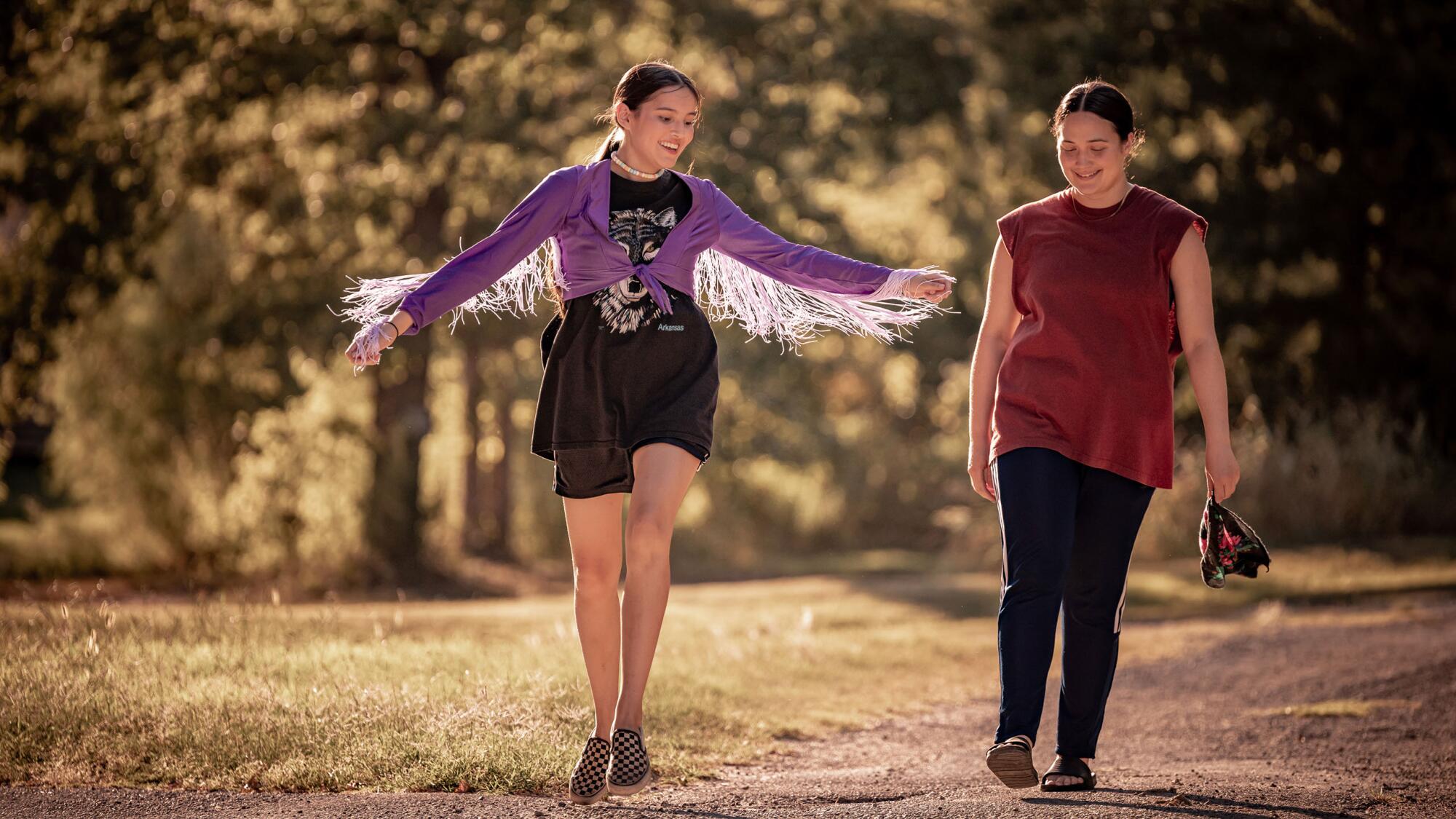
You’ve mentioned momentum and how the industry can be fickle. Has the strike slowed down that momentum for you?
I believe so wholeheartedly in why we’re striking that I’m only given more energy. I can wait around for these cronies to come around to our demands forever. I’m so new to this industry that for years I was creating without their attention. And I think regardless of what happens with these strikes, I’ll continue to do so.
Every time I pick up a script, or every time I watch a new film that I haven’t seen or had time to watch, I’m further encouraged by why we’re striking and the necessity to pay creators for their work. Because what we do is really difficult. It takes a certain amount of skill. It takes hard work and determination, and we deserve to be compensated for what we’re creating.
I don’t feel that it’s slowing down my momentum, because what slows down momentum is not being paid. What slows down momentum is not having the right amount of weeks to write your show in. What slows down momentum is not being able to have writers on set. So for me, I only feel more momentum because I know at the end of this, we’re gonna have more resources to create the art and the work that we’re drawn to do. I think these studios will have to come around because I don’t see us losing momentum in terms of of what the fight is but also in our creative prowess.
Do you have any advice for people trying to kick-start their Sundance journey?
In every interaction that I’ve had with Sundance, whether it’s the Sundance Institute or the film festival, with my mentors when I was on the mountain, with other incredible filmmakers, the advice I would have is just to be your unique self.
I constantly get emails or Instagram DMs. People will reach out and say, “I’m applying to the lab” or “I’m applying to the festival, what’s your advice?” Or “How did you answer this question?” My answer is always, “You have to do it in your own way and in your own voice.” Because I don’t believe Sundance is looking for any specific answer. And if you’re answering the same as everyone else is answering, I’m pretty sure that that’s going to be to your detriment. My advice is always present your vision and present your unique self as boldly as you can.
I think that’s something the Institute has really taught me. For a long time, when I was trying to get along in this industry, I was always looking at trends, like, “Oh, sci-fi is really big right now, so I should write sci-fi.” I don’t think that’s gonna get you in the festival or in the labs. I think what’s successful is when you present them with a story that must be told and you present yourself as the person who must tell that story. When you have a story that’s so unique to you, or unique to your background, or unique to your interests and passions and loves, then you can make that case.
I can’t express how grateful I am to the Sundance Institute and the labs and fellowships that I’ve had because now when I’m making work, whether it’s writing a “Reservation Dogs” episode, or I’m going to a meeting or I’m pitching a project, I’m always asking myself “Why am I telling the story?” and mining for how I can infuse this with something that’s specific to me.
Only good movies
Get the Indie Focus newsletter, Mark Olsen's weekly guide to the world of cinema.
You may occasionally receive promotional content from the Los Angeles Times.
Was being at Sundance with a feature in competition the dream come true that you thought it would be?
I think because we’ve had such a saturation of media over the past eight years, I thought we were gonna go there and we were gonna sell the movie and I was going to be able to get the movie to audiences. Because me as an artist, my favorite part of the process is having that conversation.
When you’re talking about being in an industry that’s going through so much right now, whether you’re talking about the strikes or independent film not looking the same as it did five years ago, I think that was a little bit surprising. But it doesn’t deter me from understanding what a massive accomplishment it was to be at Sundance. And it also doesn’t take away from how great I know the film is. I sat and watched the other films, and I know how good they are. I know how being listed among these other filmmakers and other films, what that means. Not just to me as a person, but it means something in terms of “the product” and of what the film is. I am so thrilled with how the premiere went and so thrilled with how the response has been since we’ve been at Sundance, and I am grateful for that momentum as the film continues to reach audiences and as we continue to have distribution and sales conversations.
Having an Indigenous-made film in competition at Sundance, that in and of itself is a massive success when you look at the lack of films and access that we’ve had to stages like this. So I think I count it as a massive win, and I am so thrilled that my first feature film that I ever wrote and directed premiered at Sundance. Who wouldn’t be excited and who wouldn’t be proud of that? I will have that in my little bio for the rest of my life. Even if I never do another thing, I did that, which is pretty big.
What is your sense of Indigenous stories and storytelling within the industry now? Especially with a show like “Reservation Dogs” coming to an end?
I think that beacon is going to continue to move forward. If you just look at all the different things that are cooking with all the different writers on that show, including [“Reservation Dogs” co-creator] Sterlin [Harjo], there’s definitely more to come.
It’s impossible to get caught up and lost in what’s “trendy.” Some people have been like “this Native American thing in Hollywood is probably just a trend, so you should make sure that you know how to write other things.” And I don’t even know what that means. Because even if I wrote a story that didn’t have Indigenous characters, it would still be coming from an Indigenous creator and queer creator. I have lots of different intersections of who I am, but you still are infusing your identity into anything that you work on.
I think there are so many talented, incredible Indigenous creators that have been able to get their [Writers Guild of America] cards and their [Directors Guild of America] cards [working on the show]. We’re here and we made the best show on TV. So I think we’re probably gonna make more stuff and get hired to do other things because we can do it. We’ve proven that we can do it. We’ve always known we could do it. Now it’s just up to these decision makers to give us the budgets and the resources to do it. So I’m very optimistic. I have to be.
More to Read
Only good movies
Get the Indie Focus newsletter, Mark Olsen's weekly guide to the world of cinema.
You may occasionally receive promotional content from the Los Angeles Times.
